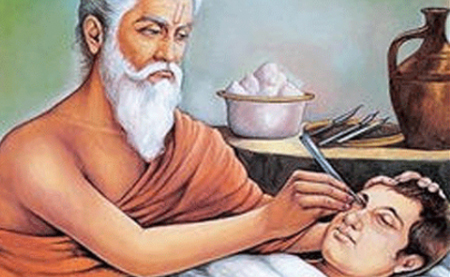Ayurveda
Ayurveda is the oldest healthcare system in the world. This traditional health care system combines the profound thoughts of medicine and philosophy.

Origin of Ayurveda
Ayurveda is a science of life. It tells what is good and what is not for the healthy life.
It is difficult to date the origin of Ayurveda precisely due to the absence of written records. Ayurveda forms part of the Vedas, which are the oldest known records of human civilization. As the Vedic manuscripts are dated between 4000 and 6000 BC, studies have concluded that Ayurveda existed at that time and may have originated much earlier. Over time, most of the basic understandings were recorded in written form in the ancient Indian language of Sanskrit. Therefore, the essence of this discipline remains unchanged even today. When the Vedas were recorded in written texts, the Ayurvedic wisdom that was spread throughout them was extracted by Ayurvedic scholars and compiled into ‘samhitas’ (books or treatises). Three of the most ancient and major treatises of Ayurveda still exist today: Charaka Samhita (dealing with fundamental concepts, diseases, and herbal medicines), Sushruta Samhita (dealing with anatomy and surgery), and Astanga Hridaya, which offers an overview of the works of Charaka, Sushruta, and other renowned Ayurvedic scholars.
About Ayurveda
Ayurveda is a complete knowledge about life, how to live life in a healthy way and to achieve harmony with the nature.
Ayurveda (the science of art of healthy living) is one of the branches of Vedas. It is regarded as upaveda (offshoot) of Atharva-veda. It is a stream of the knowledge passed on from generation to generation from teachers to their students and so on. This knowledge is in a continuous flow. From where it came is not sure, who started this chain, none can tell about it. Beside teachers and students, it is passing on from a father to his son and from a mother to her daughter. It is flowing since eternity parallel to the Vedic literature that is why its emergence has been said to be from the creator (Brahma) himself. It is called eternal because nobody knows when it was not there. All this shows its long tradition and deep attachment to the Indian culture.
Etymologically Ayurveda has two word- Ayu and Veda. Ayu means life and Veda stands for the knowledge. So strictly speaking Ayurveda is knowledge for life. For what this knowledge is? What is the aim of Ayurveda? Talking about both Paramount Scholars of Ayurveda – Charka and Sushruta has told that the Aim of Ayurveda is to prevent the diseases in a healthy person and to cure the diseased one. They have given these following definitions of Ayurveda:

Ashtang Ayurveda
Eight branches of Ayurveda
Ayurveda is a science which was offered to students by the teachers in a chain. This knowledge was totally classified and systemized so that pupils can retain it and understand in a better way. These eight parts are known as ASHTANG AYURVEDA.

Kaya Chikitsa
Healing and detoxifying measures are discussed

Shalya Chikitsa
dealing with extraction of foreign bodies

Shalakya Chikitsa
Dealing with disease of supra-clavicular region - ENT. & Ophthalmology

Agad-Tantra
Deals with alleviation of poison, artificial poison and toxic symptoms due to in take of antagonistic substance

Kaumar Bhritya
Deals with the pregnant ladies and babies

Bhoot Vidya
Deals with spirit or organisms - Psychiatry Medicine

Rasayana
Dealing with promotional measures – Rejuvenates

Bajikarna
Dealing with aphrodisiacs
